This website contains pictures taken by myself and others, mostly yours
truly using several different camera formats over the decades and I
will list the ones that I can remember. I receive many positive
comments about the pictures I have posted on this website and thought I
would give a recapitulation of my camera equipment used. Prior to my four year tour
of duty in the US Navy, I had very little interest in photography and my
first experience of pressing a shutter button on a camera was in the mid
1950s. That camera was a Kodiak Brownie Box
Camera and used the roll black and white film and owned by my Aunt Hattie and Uncle Douglas Coley. They took
many pictures with that ole box camera and sometimes you could get a decent
picture in ideal lighting conditions. Internet stock photo below. Remember this camera?
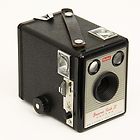
I had to locate an internet pix of the camera since most of those ole
cameras are long gone and in camera collections, however you can still
find them for sale on EBay fairly regular.
When I enlisted in the US Navy in 1964 it seemed as if every sailor was
snapping pictures to document our Boot Camp training experience and I had to
get on the band wagon too. I purchased a
Kodiak Instamatic 50 camera that took the 126
film cartridges for 28x28mm exposures and made many, many pictures what that
little camera. I think I went through at least two of them while I was
in the US Navy, whereas the built in flash or flash hot shoe was the first thing
to go on them, otherwise a rugged, reliable and easy to carry camera.
While in the US Navy there were some serious
"shutterbugs" that
had the high dollar name brand 35MM SLR cameras with a camera bag with all
types of different focal length lenses, large flash units, miniature
tripods, shutter release cords, etc. Internet stock photo below:
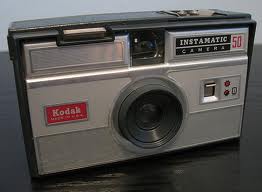
After my four year tour of duty was up with the US Navy in 1968, I
continued to use the Kodiak Instamatic
camera until it died and replaced it with a
Polaroid Instant 400 Camera
sometime before 1975. Most of the color pictures taken by
the Polaroid camera has faded very badly and they were stored under acetate
photo album inserts which destroyed many of them, but did scan what survived
to digital format sometime around 2001 or later.
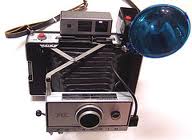
At some point either before or after the usage of the Polaroid camera, I
used a Kodiak Pocket Instamatic 20 camera that took the 110 film and it was
also a reliable compact camera. Internet stock photo below:
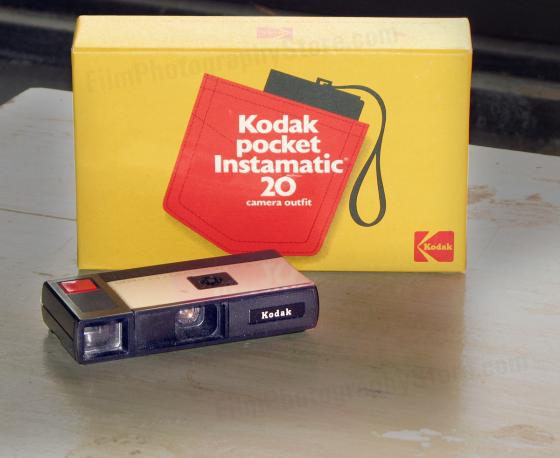
I believe it was around 1975 that I decided to purchase a professional
35MM SLR camera following the advice of one of my musical customers, H.
Armstrong Roberts of Philadelphia, PA who was a professional photographer
that recommended a
Nikon F2A camera with a 55MM Micro Nikkor lenses for close-up one to one capture of musical
instrument inlays. That camera along with an assortment of
lenses has captured thousands of images up until around 2001 when I went
digital. The Nikon F2A camera was manual all the way although it did
have a very unique diode image metering system but was manual focus.
My eye sight was beginning to change and took many hundreds of images that
were slightly out of focus since you are focusing through the
lens. My favorite film was the
Kodachrome 64 which
produced some of the most vivid saturated colors of the time. That was
long before digital and PhotoShop. At the time you had to send the
exposed film back to Kodiak or licensed independent labs capable of doing
the K-14 process. Kodiak labs produced the best results IMHO!
Since we are in an ever changing and dynamic world, film media has fallen
by the way side except for specialized usage and the Kodachrome film was discontinued in 2009. Picture of my antiquated
but operational no longer
used 35MM SLR film system:
NOTE: I donated the below equipment to
James Price in
Wadesboro, NC for his antique business.
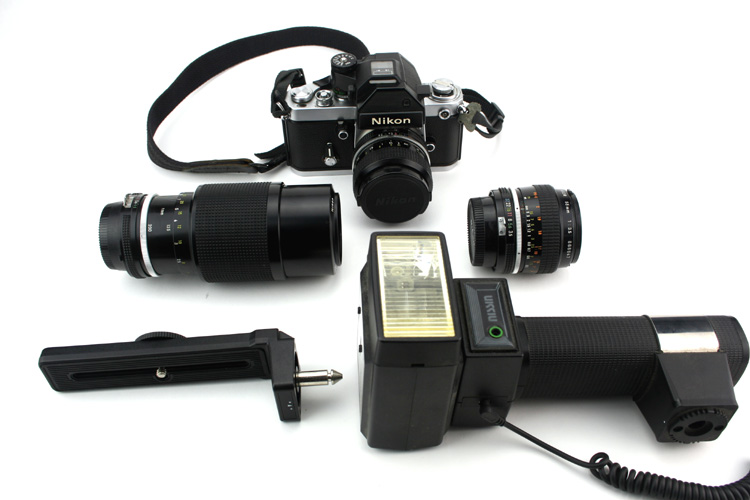
After purchasing the Nikon
F2A in 1975 my next camera was a Hasselblad 500C/M
with a Zeiss 80MM lenses with a film negative size of 2 1/4 x
2 1/4 inches and probably took some of the sharpest pictures due to the larger
format size. However, that was about the time the dollar devalued
against European currency and other lenses by Carl Zeiss was just far too
expensive to purchase. I traded that camera for a 80-200MM Nikon
Nikkor zoom lenses and took a sizeable loss. The Hasselblad was not the
camera for me and didn't like the waist level viewfinder and believe you had
to use an auxiliary light meter. Internet stock photo below:
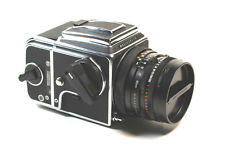
I don't think I took too many pictures in the 1990s for whatever reason
and it was our son William McKnight Porter, Jr. that got me into the digital
age sometime around 2000. Bill was still in the US Navy at the time
and lived in Southern California with his family and had a training session to complete in
Norfolk, Va. With a few days down time before flying back to San
Diego, he came by our home for a very
welcomed visit. He brought me a computer that he put together and had
me subscribe to the then only local dial up internet service provided via Pee Dee Electric
Corp. and that sparked an interest in the young internet. I was
already very familiar with personal computers, etc. installing the first
personal computer, printer and modem at the Anson Correctional Center in
Polkton, NC and learning current data processing and word processing
applications to the Departments needs. Well, that
"free"
computer Bill Jr. installed ended up costing me about 3000 dollars
since the peripherals like Photosmart printers, internal CD burners, digital
cameras, dedicated slide media scanners and regular scanners were well into
the 500 dollar range each for the mid to high range equipment. Memory
for personal computers were hundreds of dollars per megabyte too.
Pix below of my first digital camera being an
Olympus D460 zoom at a humongous 1.3 mega pixel which was
about standard at the time. I
looked at a Sony digital camera and it was a few hundred dollars more than the
Olympus and the Olympus gave excellent images. I still have the
little digital camera and it is functional! I used this camera
with a home made telescopic monopod to take self portrait hunting pixs until
I retired it.
 .
.
The trend with
digital equipment is faster processors, larger storage capacity and with
cameras larger pixel size and more zoom to the lenses; guess I had fallen
into the marketing trap as well. My next digital camera was the
Olympus Stylus 400 purchased
sometime around 2004 which is 4.3 mega pixel and I use it very often.
It has a remote shutter control and great for taking self portraits, etc.
and I think that was the main reason I purchased the camera. Most of
today's point and shoot cameras in the AUTO mode can handle 90
percent or more of the average amateur photographers needs. The small
point and shoot cameras will be used by more people since they are compact
and small which means you will have the camera with you when you need it.
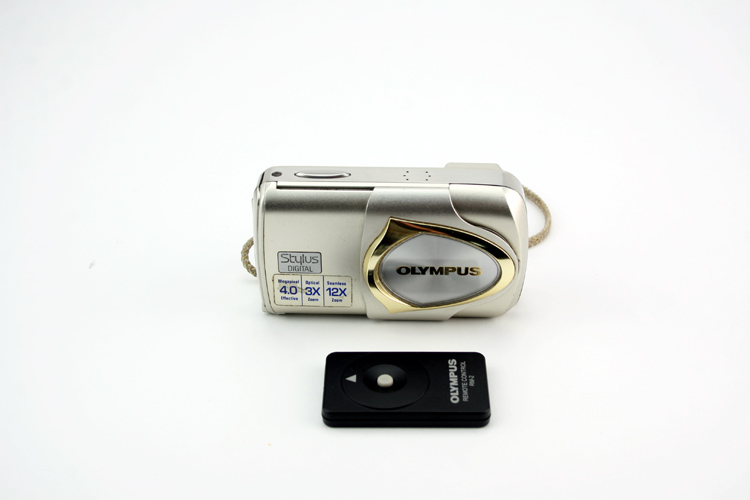
A few months back, Bill Jr.
sent me his older Canon 20D 35MM
SLR camera and it is like being back into the SLR camera mode again.
The beauty part is you have the best of both worlds with the same capability
one had with the 35MM SLR (single lenses reflex) camera but with digital
capability. The disadvantage of the 35MM digital SLR camera is their
size and that presents transportation problems at times but the pros out
weigh the cons for sure.

Since
receiving the above camera and lenses, I purchased a radio remote shutter
control and a manual remote shutter control which works very well allowing a
longer set-up time. The
camera has a built in timer for self portraits and is very user friendly.
This camera has a ton of features and only scratched the surface of what it
is capable of doing. I find that I keep the Digital 35MM SLR camera on a
tripod in our basement for set-up pictures of my recipes and other things
requiring a better soft box type light source to control the shadows and
glare. I use this camera more in the manual mode setting as far as
controlling the aperture and shutter speed. I normally increase the F-Stop
about 1 to 1 1/2 stops to get a white background without totally washing out the
image. I still have to use PhotoShop imaging editing program to get
the white background exactly like I want it since the camera depicts a true
white background with a certain percentage of grey color. I have
forgotten most of my 35MM camera techniques as far as controlling the amount
and duration of light to get a proper exposure with less distortion but it is coming back.
The beauty part of the point and shoot cameras in the Auto mode; it does the
thinking for you and most of the time will get you the desired picture.
With half a dozen or more program modes on most of the current digital
cameras, you can usually find a program to meet your specific needs.
NOTE: The above Canon 20D died on me after several months of usage
and not feasible to have it repaired due to its age and parts not available.
I purchased a used Canon 30D from EBay and very satisfied with it. I
also added a Canon 60MM Macro lens which gives sharp and clear close-up
pixs.
Along with the above
cameras, there has been many auxiliary light sources ranging from the small
camera shoe mount ones to the large professional camera base mounted ones
with a high guide number output. I am currently using "cheap" Cowboy Light
Studio
CFL soft boxes and they are working out pretty good but not for the
professional photographers demands! They are too flimsy and
troublesome to take apart and transport and set up again. They might
last a few times and that would be it. Like I have said many times,
"Most of the time you get what you pay for"
and these soft boxes are no exception. My basement
man cave "studio":
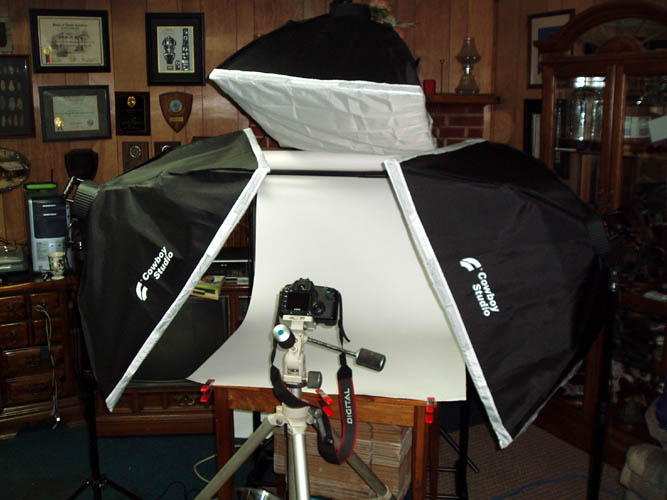
Currently, I don't see any need to purchase another digital camera unless
my little point and shoot Olympus Stylus 400 camera dies on me since this is
my everyday camera. For web publishing, you don't need a ton of mega
pixels but do need them if you plan on making high quality prints in the
range of 8 x 10 and larger. My sister Susan Pettigrew of
Reidsville, NC gave me three or four Olympus digital cameras that she no
longer used and one of them was the Olympus Stylus 400 of which my bride is
now using.
Personally, I am happy with digital technology even though in
my humble opinion it does tend to reduce ones ability to
"think outside of the box" but
the pros far out way the cons. I can't image going back to the film
media for day to day picture taking, analogy audio and video recordings,
manual typewriters and word processors, etc. One of my favorite
clichés, "Time waits for no one".
You snooze, you loose!
Web posted by Bill aka Mickey Porter
10-13-12.
LEAVING ON A
SPIRITUAL NOTE
If you do not know Jesus Christ as your Lord and Savior, please take this
moment to accept him by Faith into your Life, whereby Salvation will be
attained.
Ephesians 2:8 - 2:9 8 For by grace are ye saved through faith;
and that not of yourselves: [it is] the gift of God: 9 Not of works, lest
any man should boast.
Hebrews 11:1 “Now faith is the substance of things hoped for, the
evidence of things not seen.”
Romans 10:17 “So then faith cometh by hearing, and hearing by the
word of God.”
Open this
link about faith in the King James Bible.
Romans 10:9 “That if thou shalt confess with thy mouth the Lord
Jesus, and shalt believe in thine heart that God hath raised him from the
dead, thou shalt be saved.”
Open this
link of Bible Verses About Salvation, King
James Version Bible (KJV).
Hebrews 4:12 “For the word of God is quick, and powerful, and
sharper than any two edged sword, piercing even to the dividing asunder of
soul and spirit, and of the joints and marrow, and is a discerner of the
thoughts and intents of the heart.”
Romans 6:23 “For the wages of sin is death; but the gift of God is
eternal life through Jesus Christ our Lord.”
Romans 3:23 “For all have sinned, and come short of the glory of
God;”
Micah 6:8 “He hath shewed thee, O man, what is good; and what doth
the LORD require of thee, but to do justly, and to love mercy, and to walk
humbly with thy God?”
Philippians 4:13 "I can do all things through Christ which
strengtheneth me."


